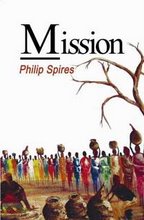Over forty years ago a new English teacher at my school answered a question asked by an eager student. The question was, “What do you think is the greatest novel written in English?” He didn’t think for very long before replying, “The Heart Of The Matter.”
We academically-inclined youths borrowed Graham Greene’s novel from the library and eventually conferred. There were shrugs, some indifference, appreciation without enthusiasm. We were all about sixteen years old.
I last re-read The Heart Of The Matter about twenty-five years ago. When I began it again for the fourth time last week, I could still remember vividly the basics of its characters and plot. Henry Scobie is an Assistant Chief of Police in a British West African colony. It is wartime and he has been passed over for promotion. He is fifty-ish, wordly-wise, apparently pragmatic, a sheen that hides a deeply analytical conscience. Louise, his wife is somewhat unfocusedly unhappy with her lot. She is a devout Catholic and this provides her support, but the climate is getting to everyone. She leaves for a break that Scobie cannot really afford. He accepts debt.
The colony’s businesses are run by Syrians. Divisions within their community have roots deeper than commercial competition. There is “trade” of many sorts. There are accusations, investigations, rumours and counter-claims. Special people arrive to look into things. There’s a suicide, more than one, in fact, at least one murder, an extra-marital affair, blackmail, family and wartime tragedy.
But above all there is the character of Henry Scobie. He is a man of principle who thinks he is a recalcitrant slob. He is a man of conscience who presents a pragmatic face. He makes decisions fully aware of their consequences, but remains apparently unable to influence the circumstance that repeatedly seems to dictate events. He remains utterly honest in his deceit, consistent in his unpredictability. His life becomes a beautiful, uncontrolled mess. His wife’s simple orthodox Catholicism contrasts with his never really adopted faith. He tries to keep face, but cannot reconcile the facts of his life with the demands of his conscience. His ideals seem to have no place in a world where interests overrule principle. He sees a solution, a way out, but perhaps it is a dead end.
For twenty-first century sensibilities, the colonial era attitudes towards local people appear patronising at best. Perhaps that is how things were. But The Heart Of The Matter is not really a descriptive work. It is not about place and time. Like a Shakespearean tragedy, the events and their setting provide only a backdrop and context for a deeply moving examination of motive and conscience. And also like a Shakespearean tragedy, the novel transcends any limitations of its setting to say something unquestionably universal about the human condition. Forty years on, I now realise, that my new English teacher was probably right.


























